|
Our lives are unmistakably touched by the actions and values of our personal heroes. Many of us looked upon our parents as our first heroes, later adding to their exalted ranks the likes of athletic legends, first responders, teachers, coaches, and others whose passion and commitment went above and beyond in order to make a difference. Even today, heroes walk among us in their duties to God, country, and community: many have answered the call to serve in the armed forces, some are called to religious ministry, and others seek to defend and uphold life through witnessing to life and serving on the margins of society. Many live their lives simply, with no fame or fanfare, as they faithfully seek to better their own little corner of the world and love their families, neighbors, and friends. As Catholics, we have no limit to the heroes to whom we can lift our aspirations (and intercessions!); they are the countless saints of the Kingdom of God and Church Triumphant who, even now, urge us to live more fully for Christ. They are incredible examples that bring others into an encounter with the living God through their lives. All are called to be saints. As Mother Angelica always urged her EWTN viewers, “Don’t miss the opportunity!” Mother Angelica is one of my favorite heroes: her wisdom and insight, coupled with her iconic sense of humor, was so easily accessible on TV and the internet. When she looked into the camera, she was looking at me, speaking to me, urging me to be a better Christian. Sainthood is not just the attainment of spiritual perfection; what is heroic is recognizing and repenting of one’s spiritual shortcomings, returning to the merciful embrace of the Lord, and committing to be a better witness to Christ. Mother Angelica would similarly observe, “Faith is what gets you started. Hope is what keeps you going. Love is what brings you to the end.” Never let personal difficulty or worrying that it’s too much for you to handle scare you from addressing your hunger and desire for holiness. The saints came from all walks of life, meaning that each of us can fully answer the universal call to holiness no matter the circumstances. The demands of the spiritual life require a uniquely formed system of accountability, determination, and humility. While God is forever patient with us, we may become frustrated at ourselves or compare ourselves to our peers. That is why we can turn to the saints as guides and intercessors; they can shape our unique circumstances in life to better identify ways of living out our Christian witness in the world. With all the turmoil of the world, how critical it is for us to live boldly and authentically as Christians! And if we are viewed and treated suspiciously by observers, may we patiently embrace all that for the glory of God! How heroic are the martyrs of Holy Mother Church who “rejoiced that they were considered worthy to suffer dishonor for the sake of the Name [of Christ].” Especially when the negativity of the news tempts many to lose hope in the apparent darkness of the times, how necessary, then, it is for us to bring the brilliant Light of Christ and His Gospel message to expel the darkness and bring peace to those awaiting salvation. May the saints of heaven always remain sources of heroic inspiration throughout our lives, and may we be found worthy to one day join them in the eternal feast of the Kingdom of God!
0 Comments
In October, Pope Francis canonized five “Blessed” men and women of the Church, including Cardinal John Henry Newman, the Anglican convert “widely recognized as one of the greatest theologians of the 19th century.” Along with Cardinal Newman, four women were made saints, including three religious women and one laywoman. When I first heard the news on the car radio, the name “Cardinal Newman” sounded familiar, but I couldn’t remember why. I was also curious about who the women were – and why I hadn’t heard their names reported also! My passing interest grew into a promise to learn: 1. Where have I heard of John Henry Newman? and 2. Who were the four women canonized with him? The first question was easiest to answer. In addition to his famous conversion and subsequent tenure as the vicar of St. Mary the Virgin Church at Oxford University, John Henry Newman was a prolific writer. Newman’s essays and sermons even influenced the White Rose student group in Munich, which included Sophie and Hans Scholl, who were tried and executed after speaking out against the Nazi regime. These clues helped – but when I stumbled upon Cardinal Newman’s Wikipedia page, the answer hit home. If you have ever visited a secular college campus in the United States, Canada, or the United Kingdom with a Catholic Student Center – the odds are good that the center will be called a “Newman Center,” “Newman Club,” or “Newman House.” Newman Centers “get their name and their role from the cardinal who died in 1890 and emphasized that Catholic students who attend public universities must be given a place to gather to support and encourage one another in their faith.” This “Newman Connection” helped me understand why this saint is beloved in many English-speaking parts of the world – especially among students, young adults, and those of other Christian denominations. One mystery solved – four to go! At first, I was totally unfamiliar with the four newest women saints. My lack of familiarity may owe partially to the fact that these women are from four very different, non-English speaking parts of the world: Brazil, India, Italy, and Switzerland. The three religious women were Blessed Dulce Lopes Pontes, Mariam Thresia Chiramel Mankidiyan, and Blessed Josephine Vannini. The laywoman canonized was Blessed Marguerite Bays. In the Holy Mass homily, Pope Francis said “[These three religious women]… show us that the consecrated life is a journey of love at the existential peripheries of the world. Saint Marguerite Bays, on the other hand, was a seamstress; she speaks to us of the power of simple prayer, enduring patience and silent self-giving.” St. Marguerite Bays was a lay member of the Secular Franciscan Order in 19th Century Switzerland. Early in her life she dedicated herself to helping others, especially her parish, her family, and unemployed Swiss peasant farmers who were adversely affected by the mechanization of the of agricultural industry. Fittingly, one of the miracles attributed to Marguerite involved the case of a two-year-old who fell under the moving wheels of a tractor. “Her grandfather witnessed the accident unfolding and prayed to Marguerite... and the girl got up unharmed.” Marguerite experienced a miraculous healing in her own life from bowel cancer and lived to age 63. St. John Paul II beatified her in 1995. St. Giuseppina Vannini is the first Roman woman to be canonized in over 400 years. Raised an orphan in the shadow of St. Peter’s Basilica, she went on to found the Daughters of St. Camillus, after being rejected from the Daughters of Charity for poor health. She faced rejection and bureaucratic roadblocks to establishing her order, which now has 800 sisters working in 22 countries. Giuseppina was beatified by St. John Paul II in 1994. St. Mariam Thresia Chiramel Mankidiyan also founded a religious order, the Congregation of the Holy Family, with the mission of caring for poor families in India. A mystic, she was born Thresia Chiramel Mankidiyan (“Theria” for Teresa of Avila). Pope John Paul II named Mariam as Venerable in 1999. St. Dulce Lopes Pontes is well known in the Western Hemisphere, often referred to as “Brazil’s Mother Theresa,” due to her birth into an upper-middle class family and her subsequent devotion to the poor. She founded the first Catholic workers’ organization in the state of Bahia, and she also “launched several initiatives including a health clinic for impoverished workers, a school for working families, a hospital, an orphanage and numerous care centers for the elderly and disabled.” At the time of her death in 1992, Sister Dulce had been nominated for the Nobel Peace Prize. In Pope Francis’ Holy Mass homily, he discussed the journey of faith as the way of those who cry out, walk and give thanks. This is a dynamic challenge, taken up by all five of our new saints – many who paired their rich mystic experiences with bold, resourceful action to affect change. St. Dulce Lopes Pontes, St. Mariam Thresia Chiramel Mankidiyan, St. Josephine Vannini, St. Marguerite Bays, and St. John Henry Newman certainly inspire me to do likewise. 10/24/2019 The Apostolate of Accompaniment: Creating an Environment of Accompaniment in Our ParishesRead NowWhen people speak about the work of evangelization or accompaniment, they often speak about going out to the margins, “to the highways and the hedgerows” (Luke 14:23,) to bring the “nones” and the unbaptized into the Church. This is, of course, an essential part of Jesus’ final commission to his apostles to baptize and make disciples of all nations (Matthew 28:16-20). But I have to wonder: what’s the state of spiritual health in our own parishes? Are the lay faithful aware that their sacramental experience is an encounter with Christ, and do they care about their brothers and sisters with whom they share Communion? Are the people in our pews accompanied by anyone in their journey of faith or are they trying to live their faith on their own? There are many definitions for spiritual accompaniment, but in the book I co-authored with Colleen Campbell as a resource for the Catholic Apostolate Center, we define spiritual accompaniment as “the apostolate of intentional relationship that is oriented toward a definitive direction of growth in holiness and transformation in the Person of Christ.” In general, accompaniment is “a broad term that refers to a relationship between two or more people who share mutuality and reciprocity in the spiritual life” (The Art of Accompaniment). I believe this “apostolate” of accompaniment is essential to a parish’s spiritual health for three main reasons: First, creating a culture of accompaniment in the parish enables the lay faithful to be who they are called to be by their baptism. In the Rite of Baptism, we receive the Holy Spirit and we are made members of Christ’s Body. As members of the same Body, we have a responsibility to bring the light and love of Christ to one another. As Paul writes in First Corinthians, the various parts of the body must have concern for one another because we need each other (1 Corinthians 12:21-26). When members of the lay faithful take an interest in one another’s faith journeys, encouraging one another on that journey, they are living their Christian vocation as the Church intends. When members of the lay faithful are not concerned for members of their parish community, they become spiritually stunted and begin to believe that faith does not require community in one Body. Second, accompaniment helps a parish to become the best ordinary place of encounter with Christ. The parish is the most likely place where an individual begins his faith journey. Churches that sit on familiar street corners appear as safe havens for those who seek the Lord or some other help. The parish must embrace a culture of accompaniment so that when individuals approach it seeking communion, they are met with a warm and welcoming response instead of sacramental hoops or parish boundary restrictions. Accompaniment challenges parish staff and parishioners to “[respect] the dignity of the human person, and [seek] to increase their freedom to respond to the all-encompassing love of God within their life” (The Art of Accompaniment). Finally, it’s important that we implement a culture of accompaniment in our parishes because one of the goals of accompaniment is liturgical worship, and this can only take place in the parish. Sacramental theology reminds us that the sacraments are how Jesus accompanies and remains with his Church in a physical way (CCC 1088). Accompaniment’s goal is “transformation in the Person of Christ,” and if the lay faithful are serious about accompanying one another, they will encourage one another to seek out liturgical life at the parish, because the sacraments sanctify us, build up the body of Christ, and give worship to the One who Accompanies. For more resources on Accompaniment, please click here. To purchase The Art of Accompaniment, please click here. Today we celebrate the feast of St. John Paul II, a saint of our times! He is remembered for many things, including his passion for the arts, outdoors, youth, and families. St. John Paul II also had a deep devotion to Mary, and in what I know of St. John Paul II’s life and loves, we can bring no greater joy in celebrating his sainthood than by honoring our blessed Mother. St. John Paul II’s favorite prayer was the Rosary, and I too, have developed a fondness for praying it. I stumbled upon a recording a couple of years ago in my desire to pray it intentionally. As I would listen and pray along in my car every morning before work, I discovered a love for each mystery and the fruit they bear, as like Mary, I “pondered them in [my] heart” (Luke 2:19, 51). The mysteries of the Rosary invite us to contemplate the life of Christ through the memories of Mary. St. John Paul II says remembering these mysteries “were to be the ‘rosary’ which she recited uninterruptedly throughout her earthly life” (Rosarium Virginis Mariae, §11). In this remembering, the account of the Gospel from the eyes of Mary are timeless, “not only belong[ing] to ‘yesterday’; they are also a part of the ‘today’ of salvation” (John Paul II, Rosarium Virginis Mariae, §13). In this, St. John Paul II reminds us that the Rosary is an invitation to participate in Christ’s divine life, and it is relevant across time to the faithful of all ages. Recently my routine for praying the Rosary has changed as I am now on maternity leave and spend the day taking care of my newborn daughter. Instead of rushing to get my two-year-old son into the car and dropped off at daycare before work and enjoying my prayer time alone in the car, we have the opportunity to hop in the stroller and walk to daycare, spending time together saying hi to neighbors and marveling at the changing of seasons before he starts his school day. Despite the enjoyment both my son and I get from these walks, in the transition of summer at home with mommy to school, and the transition from being an only child to living the realities of being a big brother at only two years old, for quite a few weeks my son was not happy about leaving home for the day. Although my son loves school, he was hating drop off, and his anxiety (and let’s be honest, mine, too) crept in the closer we got to school each day. One morning as I was trying to get him excited for the day, I asked him if he wanted to pray the Rosary with me, telling him it always brings me calm and comfort, and he said yes. I told him I would let my recording play, and I would tell him the stories of each mystery. Thus began a new routine for us each morning. As the Joyful Mysteries play, I tell him about how much Mary loved God that she said yes to being Jesus’ Mommy, and how we pray that we can love God like her and say yes to Him when he needs us to. When the Luminous Mysteries play, I tell him about Jesus’ first miracle, turning water into wine at the Wedding at Cana, and that through Mary, she will lead us to Jesus and help us see the miracles he’s performing in our own lives. In praying the Sorrowful Mysteries, I am very closely brought to tears as I think about explaining death to a toddler, and moved by Jesus’ sacrifice for us, telling my son that no sin stops Christ’s love for us. We pray to be good people and follow the will of God. And when we pray the Glorious Mysteries, I get to teach my son about the glories of the Holy Spirit and Heaven, praying for our ultimate happiness with Jesus, Mary, and all the saints. In praying these, I am in awe of how parenting is transforming my heart, teaching me to be like a little child, loving Jesus without abandon like my son does. By the time we’ve prayed our Rosary for the day, we’ve arrived at daycare. Filled with his spunky confidence and newfound graces, my son hops out of his stroller and says “let me give you a kiss for the road,” and sends me off on my way. Each day, he runs off to the playground to play with his friends, and I am amazed by the graces we’ve both received by praying the Rosary together. In his great love for both the Rosary and the family, St. John Paul II called families to pray this prayer together, acknowledging how its graces unite the family: Individual family members, in turning their eyes towards Jesus, also regain the ability to look one another in the eye, to communicate, to show solidarity, to forgive one another and to see their covenant of love renewed in the Spirit of God. Many of the problems facing contemporary families, especially in economically developed societies, result from their increasing difficulty in communicating. Families seldom manage to come together, and the rare occasions when they do are often taken up with watching television. To return to the recitation of the family Rosary means filling daily life with very different images, images of the mystery of salvation: the image of the Redeemer, the image of his most Blessed Mother. The family that recites the Rosary together reproduces something of the atmosphere of the household of Nazareth: its members place Jesus at the centre, they share his joys and sorrows, they place their needs and their plans in his hands, they draw from him the hope and the strength to go on. (Rosarium Virginis Mariae, §41) From daycare drop-offs to contemplating our family’s deepest sorrows and joys, we too as a family have found this hope and strength of the Rosary to be true and timeless. On this Feast of St. John Paull II, I invite you to honor him and our Blessed Mother by taking the time to pray the Rosary, finding twenty minutes of your time to devote to contemplating the face of Jesus. St. John Paul said, “a prayer so easy and yet so rich truly deserves to be rediscovered by the Christian community… I look to all of you, brothers and sisters of every state of life, to you, Christian families, to you, the sick and elderly, and to you, young people: confidently take up the Rosary once again. Rediscover the Rosary in the light of Scripture, in harmony with the Liturgy, and in the context of your daily lives” (Rosarium Virginis Mariae, §43). Know of my unending prayers for you as you begin this rediscovery of the Rosary for yourself, as with Mary, you too ponder these mysteries in your heart and recognize their fruits in your life. St. John Paul II, pray for us! Our Lady of the Rosary, pray for us! Today, the Catholic Apostolate Center is celebrating its 8th anniversary of reviving faith, rekindling charity, and forming apostles. We have both had the honor of being a part of this amazing and spirit-filled endeavor since its earliest days and remember fondly what it took to get started. When Fr. Frank Donio, S.A.C. gathered a small group of committed collaborators together to think about what the Pallottines of the Immaculate Conception Province could do to answer the Holy Father's call to a new evangelization, it was clear that we needed to work with active Catholics. We felt called to meet them where they were on their individual faith journeys. This meant that we needed to engage all that the internet had to offer, to use emerging social media, and to reach people where they were conducting their daily lives. In the last eight years, the work done by the Catholic Apostolate Center has impacted the lives of thousands of people through conferences and events; hosting hundreds of webinars and Facebook Live events; providing learning and educational opportunities through seminars and speaking engagement; making spiritual posts on Facebook, Twitter, Instagram; developing programs with our affiliated partners; and providing space for collaboration among Church entities. All the while, our mission is not necessarily to reach the masses, but to reach the one. We work collaboratively to develop our resources – working with the individual gifts and talents that each member of our team and our collaborators possess, always leaving room for the Holy Spirit. Each of us has grown professionally and personally in an environment that challenges, affirms, and provides us opportunities to share our own gifts through presenting, writing, video production, marketing, management, and administration. We look forward—through the Holy Spirit and God’s Divine Providence—to continuing our mission for another eight years and beyond.
“The religious commitment to procure the propagation of the Holy Faith throughout the world cannot be separated from that to procure to revive the Faith, and to rekindle Charity among Catholics, and this not only because such is the order of Christian Charity, but also because there is a need to rekindle the Holy Faith and to rekindle Charity among Catholics.” – St. Vincent Pallotti (OOCC III, 16)
As we celebrate today the 8th anniversary of the Catholic Apostolate Center during this Extraordinary Missionary Month declared by Pope Francis, these words of St. Vincent Pallotti offer us a summary of the interconnection of the Church’s missionary efforts, encompassing what we now call Evangelization and New Evangelization. Pallotti understood this in the first half of the nineteenth century. He knew then what the Church is calling for now, co-responsibility of all the baptized for the mission of Christ and his Church. We are all sent forth as apostles, as missionary disciples! The Center accomplishes its mission of reviving faith, rekindling charity, and forming apostles through intense collaboration, or “holy cooperation” as Pallotti would call it, with God and others. The only way the Center has come to this day is through the great collaboration among staff, collaborators, advisors, Pallottines, consultants, affiliates, and many others who are co-responsible for its mission. The Holy Spirit who came upon the Blessed Virgin Mary and the Apostles and disciples in the Cenacle in Jerusalem has sent us forth and guided us in ways that we could never have imagined back in 2011 when the Center began. We do this always in service of Christ and his Church just as Pallotti did. Thank you for your support of our efforts and know that our prayers are with you! Mary, Queen of Apostles, pray for us! St. Vincent Pallotti, pray for us! May the Charity of Christ urge us on! Can you imagine yourself as one of the apostles? Put yourself in their shoes. You were moved by Jesus. His teachings spoke to your heart. When you were with him, you felt incredibly alive, free, loved and full of hope. No one persuaded you; you wanted to follow him. You were there when Jesus fed the 5,000, gave sight to the blind, and raised a young man from the dead. He received a royal welcome into Jerusalem. You celebrated Passover with him. You were also there when the soldiers came and dragged Jesus off to be crucified. Scared for your own life, you hid in the shadows abandoning him to death on the cross. You were a puddle of fear, sadness, anger, and despair. You disgust yourself. Disoriented, you stumble upon the others. You look to Peter but that rock is crushed, broken by grief and disbelief. The Sabbath comes and goes. It’s over—time to pick up the pieces of your life and move on. But just as you begin to leave, two female disciples arrive with astonishing news. Jesus is alive! Remember the mountain in Galilee? Remember what he said? Go there and you will see him. Of course, you go. You gather with the other disciples and make arrangements for the journey. It will take four days. Along the way, you cry, confess, and tell stories. You see the mountain in the distance. A lone person is descending from the top. Before you know it, Jesus is approaching you. You are gaping-mouth-open astonished. Some fall down to worship him. Others cannot believe it. Peter collapses to his knees. And still, Jesus approaches. He embraces you. You are alive again. Jesus reaches out to everyone. He turns to Peter last, lifting him up, restoring his strength. Jesus calls you together. "All power in heaven and on earth has been given to me. Go, therefore, and make disciples of all nations, baptizing them in the name of the Father, and of the Son, and of the Holy Spirit." He pauses here, letting his eyes meet each one of us. Some of us are giddy with joy, others cannot stop the tears. "Teaching them to observe all that I have commanded you." Suddenly, your heart begins to burn within you. You have a lot to say, a lot to share, a lot to tell. You remember with crystal clarity everything he taught, every moment he was with you, all the experiences you shared. You know now who you are and what you are about. It is time to go. But you hesitate. You want to stay. Jesus knows your heart. He is speaking again. Amazingly, he is talking to everyone and only you at the same time. "Behold, I am with you always, until the end of the age." Stay here. Stay with Jesus resting his eyes in yours. You have a lot to offer. You know who you are, what the Lord means to you, what he asks of you, and what he has given you. The stark truth of mission is hard to believe. God sends you into the world because there is something the world needs that only you can give. World Mission Sunday reminds us that we are sent to the whole world. As disciples of Jesus, there is no place or people beyond our sphere of concern. Pope Francis reminds us that mission is an "immense work of mercy, both spiritual and material." Last year, many of us “walked with Francis.” This year, let us be with Pope Francis in the mission of mercy. Let us renew our call to mission - to care about everyone, everywhere. I offer three suggestions on how to renew the call to mission:
Jesus is sending us out to all nations and he will be with us always. We will be astonished at how the Lord will reveal himself to us through mission. It is time to go. **This post was originally posted on October 20, 2016. Silence is an old friend—one I don’t often get to spend quality time with. But when I do, we give each other a knowing glance, a subtle nod, a familiar smile. It doesn’t matter how many days, weeks, or months have passed—we can pick up right where we left off without any sheepishness. Today, I come in through the front door, take off my coat, and settle into the warm embrace of silence, letting it melt any frost that has accumulated in my heart. Silence knows I’m not able to visit as often these days, but she doesn’t hold a grudge or look at me disapprovingly. She gives me a tender look and welcomes me with open arms – relishing every moment I give her to rejuvenate my soul. And she can work very quickly—a few minutes, hours, (in this case) a day. Any time spent in her company is restorative. She is generous with herself. I was reminded of that this past weekend when I attended a Silent Day of Reflection at the Catholic Apostolate Center’s headquarters at Green Hill. This little oasis sits on 14 acres just a few miles outside of the hustle and bustle of Washington, D.C. and offers ample spaces, both indoor and outdoor, for prayer and reflection. The theme of the day was The Beatitudes. The schedule was sprinkled with powerful moments of prayer: Mass, Adoration, Confession, a reflection on the day’s theme, and Lectio Divina. There was also time for quiet personal prayer. Participants had the opportunity to walk the grounds, enjoy the gardens, pray in the chapel, journal, color, or simply rest. The home of the Pallottine Fathers and Brothers of the Immaculate Conception Province is a treasure, offering a welcome place of retreat, gathering, and prayer. The Pallottines, as well as the staff of the Catholic Apostolate Center, are pleased to invite and welcome those seeking formation, personal enrichment, rejuvenation, or spiritual refreshment to Green Hill and look forward to continuing to provide opportunities to do so. As a wife, mother, blog editor, homeowner, and budding gardener, I find my days often blur in the hasty movement of time. I frequently long for silence and reflection, but do not have the time or space for it. The Silent Day of Reflection organized by the Catholic Apostolate Center was an answer to a prayer and a gift for my spiritual life. After spending the day at Green Hill, I got up from silence’s hearth reluctantly, feeling gently lulled, peaceful, held. It was a refreshing day of encounter with God amidst the beautiful backdrop of nature, and I didn’t want it to end. Not all have the wisdom to seek silence, to receive the gifts she awaits to impart. We often take her for granted, drown her out, or try to replace her—convincing ourselves she is old-fashioned, irrelevant, unnecessary, extinct. She awaits all the same, ever ancient, ever new—the immortal gift of her Creator, the vehicle of His encounter, the respite of all souls. Will you seek her? To learn more about Green Hill and upcoming events, please click here. “When I saw the kindness of Jesus, I began to beg His blessing. Immediately Jesus said, For your sake I bless the entire country. And He made a big sign of the cross over our country. Seeing the goodness of God, a great joy filled my soul.” - The Diary of St. Faustina, entry 39 October 5th is the feast day of one of Poland’s great saints: St. Maria Faustina Kowalska. Along with many others, I proudly claim that St. Faustina became my favorite saint after I was introduced to her Diary. Little did I know that this spiritual masterpiece would lead me to fall in love not only with her and the Divine Mercy message, but also with the culture, language, history, and Catholicity of Poland. Since opening Faustina’s Diary for the first time in 2015, I have traveled to Poland twice and learned about other great Polish Catholics such as Blessed Jerzy Popieluszko, Blessed Michal Sopocko, and Cardinal Stefan Wyszyński. I’ve gone deeper into the teachings of Pope St. John Paul II and learned about his own devotion to St. Jadwiga, read about the Polish Solidarity Movement and its leader, Lech Walesa, and much more. I’ve often felt that Poland has its own brand of “Catholic.” There’s the Eastern Rite Catholics, Latin Catholics, and then the Polish Catholics. In the 20th century alone, countless Polish saints have risen from the ashes of two world wars to shine lights of hope, mercy, justice, and love into the world. From its mystics and martyrs to its heroic and internationally beloved pontiff John Paul II, Poland is steeped in Catholicism. You can almost taste it in the air when you hop off the plane at John Paul II Kraków-Balice International Airport or walk the grounds of the Divine Mercy Shrine in Łagiewniki. I strongly hope that future generations treasure Poland’s rich history and the giants that paved the way for them to explore the faith in an incredibly deep and profound way, given the intense historic time periods through which their faith blossomed. Recently, I had a conversation with a friend’s young Polish au pair that made me wonder if this generation does not recognize the gems earned for them by their spiritual ancestors. As I tend to do when meeting anyone from Poland, I rattled off to this young woman about all of my favorite Polish places, saints, and historical moments. She found my love for Poland surprising, and talked about how many young Poles are trying to come to the United States. This puzzled me. Understandably, a country’s own citizens are its biggest critics for a variety of legitimate reasons. But as fellow Catholics, I was hoping for a sense of pride, a recognition of the depth of their history and faith. Maybe, like our country and so many others, appreciation for heritage fades with each passing generation. Indeed, today’s Poles are further removed from the wounds of war and communism than their ancestors, and thus it becomes easy to forget what was fought and won before them. As a result of my time spent in Poland and my subsequent research, I’ve come to admire that it is a place where national culture, identity, and faith was suppressed—unsuccessfully—over and over for centuries. It is a place whose heritage was preserved with blood, zeal, and grit. A place where Catholicism wasn’t freely available but had to be searched for underground and practiced in secret. Poland had to earn where it is today, and past generations understood the price of defending this heritage. Today, when you walk into a church in Poland, you will see a handful of priests hearing confessions before Mass. You will hear beautiful hymns sung—not with heads down buried in the missals, but eyes forward, sung by heart, and with pride. You will hear piercing silence during the consecration of the Sacred Host. You will find standing room only during Mass. You will not be able to find an open store or restaurant two days leading up to Easter. As an American living in a largely secular society, these observations were refreshing to me. Ultimately, Poland’s historical example of turning suffering into mercy, justice, and love has much to teach us not only about the value of a life well lived, but about the value of misfortune well-suffered. From the surrender of St. Faustina, an uneducated peasant turned mystic-nun who penned one of our faith’s greatest spiritual works, to the small, frail priest and martyr Blessed Jerzy Popiełuszko boldly, bravely, and publicly proclaiming the truth of Christ directly in the face of communist rule, to the quarry worker and poet-turned Pontiff St. John Paul II, and everyone in between, the saints of Poland show us how we can “shine truth through misfortune,” as Fyodor Dostoevsky once wrote. Every one of the saints mentioned here overcame significant suffering, but through their surrender to Christ, became who they were meant to be, and “set the world on fire.” (St. Catherine of Siena). May you have a happy Feast Day! And if you haven’t, I invite you to open up St. Faustina’s Diary. You’ll be glad you did! On September 15, my Pallottine confrere, Fr. Richard Henkes, S.A.C., was beatified in a beautiful and spiritually moving Mass in Limburg, Germany. Having preached against the Nazi regime while serving in what is now the Czech Republic, Fr. Henkes was arrested in 1943 and imprisoned in the Dachau concentration camp. He died serving people with typhoid in the barracks where he was their “secret pastor.” The Heart of Jesus Province of the Society of the Catholic Apostolate summarizes his life and death in this way;
“The Pallottines consider his sacrifice as one of a brave warrior and as a testimony for the Christian faith as well as a martyr of Christian charity.” Blessed Richard Henkes was not perfect, but Christ perfected him through his living witness unto death of the motto of the Pallottines: “The Charity of Christ urges us on” (2 Cor. 5:14). Rekindling charity as St. Vincent Pallotti called us to do, often means witnessing to what is just in this world, even if it causes persecution and suffering. We are called to accompany our brothers and sisters who are oppressed and in need without counting the cost to ourselves and our own comfort. God provides us with the ability to do such things – to grow in holiness – as Blessed Richard Henkes came to know. We do not do it on our own. Pope Francis offers an important reflection for our day when he says in Gaudete et Exsultate: “Persecutions are not a reality of the past, for today too we experience them, whether by the shedding of blood, as is the case with so many contemporary martyrs, or by more subtle means, by slander and lies. Jesus calls us blessed when people ‘utter all kinds of evil against you falsely on my account’ (Mt 5:11). At other times, persecution can take the form of gibes that try to caricature our faith and make us seem ridiculous. Accepting daily the path of the Gospel, even though it may cause us problems: that is holiness” (94). May the Charity of Christ urge us on! Learn more about Blessed Richard Henkes, S.A.C. at www.CatholicApostolateCenter.org/Henkes We are now offering a new book about Blessed Richard Henkes, S.A.C. Click here to order the print version and here for the eBook. |
Details
Archives
July 2024
Categories
All
|
About |
Media |
© COPYRIGHT 2024 | ALL RIGHTS RESERVED

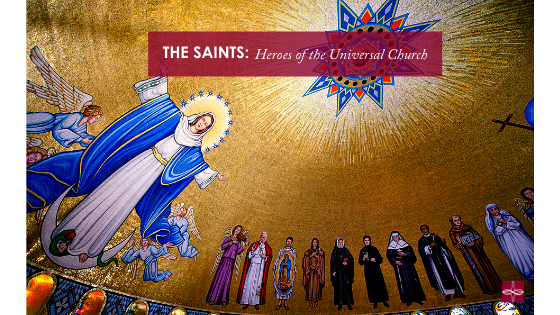

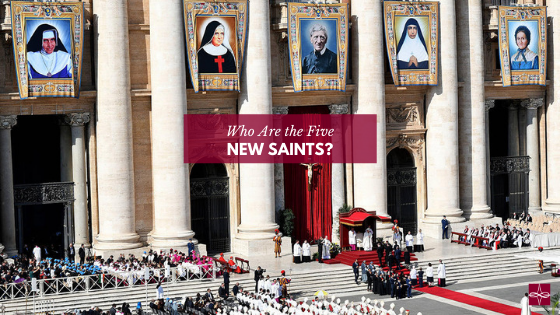



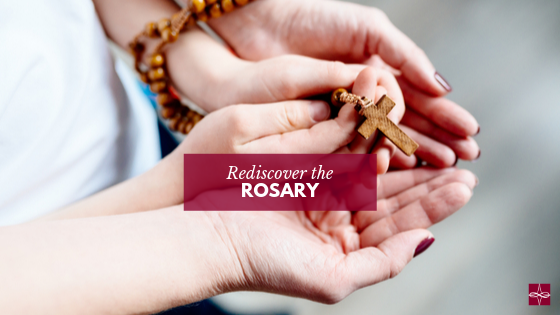

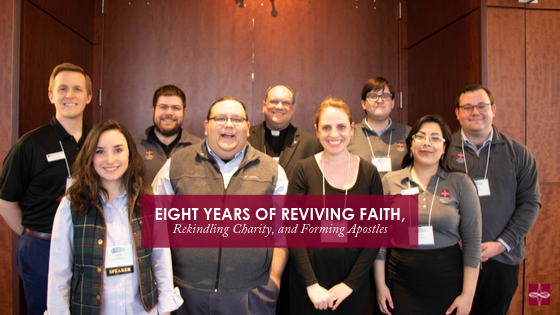
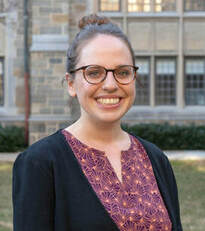

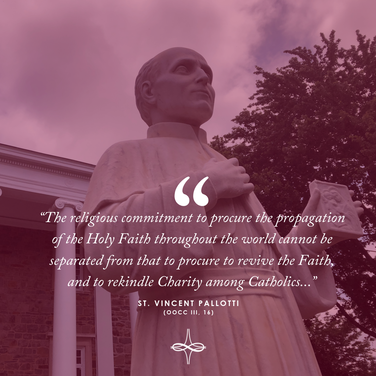
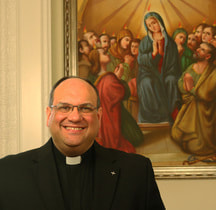
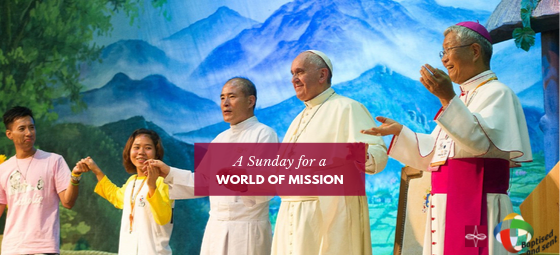



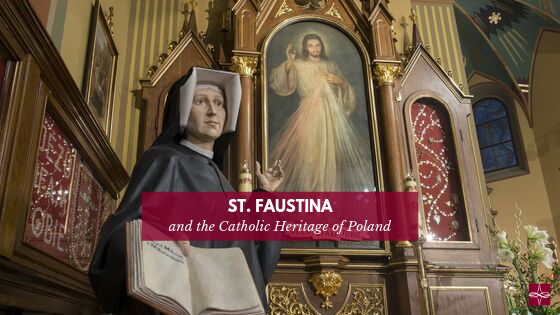

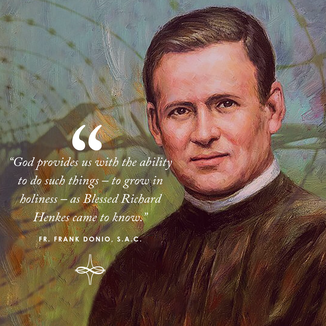
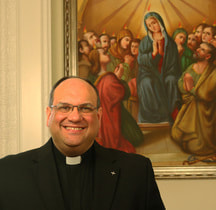
 RSS Feed
RSS Feed